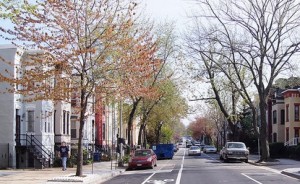
Affordable housing funding this fiscal year will be better directed to DC’s lowest-income and most vulnerable residents, thanks to new guidelines set by Mayor Bowser.
The Department of Housing and Community Development (DHCD), which allocates most funding for affordable housing, released these new criteria in its 2015 Request for Proposals.
Here’s what’s new in how DHCD will distribute FY16 affordable housing funds.
- Housing for very low income families will be prioritized. This year’s funding will be prioritized for housing that serves DC families most likely to struggle to afford housing. Only projects that produce units for households with incomes below $54,600 for a family of four’half of the median income for the DC area’will be considered for funding. This is a positive step, because it directs limited affordable housing resources to those suffering the most from DC’s high housing costs. The majority of DC renters at that income level spend more than half their income on rent.
- Permanent supportive housing (PSH) will be connected to those who need it. At least 5 percent of units in a funded project must be PSH (housing for vulnerable residents with supportive services on site), per a best practice adopted in DC last year. The new guidelines clarify that PSH funding will be directed to projects that use the “Coordinated Entry” system. Coordinated Entry streamlines access to housing for people who are homeless or at risk of homelessness, prioritizes the most vulnerable, and connects them to the housing that best meets their needs.
- PSH projects will follow a Housing First model. The “Housing First” model, in which clients don’t have to meet prerequisites before accessing housing and services, is another recognized best practice in combatting homelessness. The new guidelines prioritize projects that use this model.
This year’s budget included significant funding for affordable housing, including $100 million for the Housing Production Trust Fund. DCFPI applauds the DC Council for making those investments, so that more DC families will have a decent and affordable place to live. The next step is to direct those resources to meet the most urgent needs of DC’s poorest, most vulnerable residents. The new funding guidelines are an important step in that direction.
To print a copy of today’s blog, click here.
